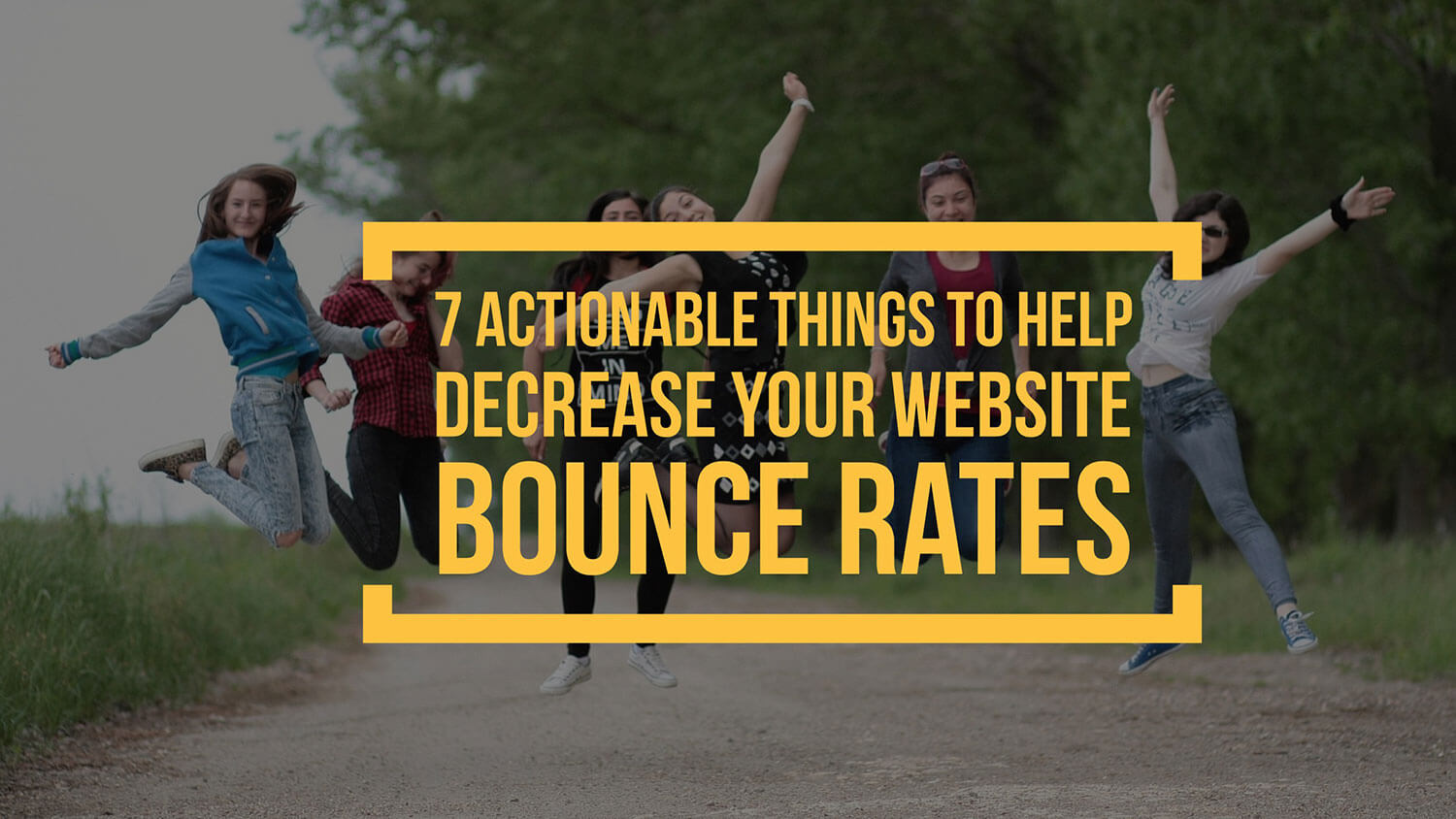One of the things most bloggers and website owners hope not to have on their website is something that is called a “high bounce rate.” While many SEO experts will argue that a high bounce rate does not necessarily mean you will have a low conversion rate, not all website are created equal.
Bounce rate is the percentage of visitors to a particular website who navigate away from the site after viewing only one page. Obviously, with any internet site, the goal is to encourage visitor engagement, not lose the reader quickly. So, the higher that bounce rate number, the less favorable it is in they eyes of search engines. They want to see your visitors engaged as much as possible.
And, you want to see them converting into paying clients or customers. The more chances you have to put your message in front of them, the better chances you have of making that happen. So, it’s to your advantage to keep them on your site as well.
There could be many reasons for a high bounce rate, and not all of them are necessarily a bad thing. It could be that your visitor got the answer they were looking for, and they were simply done perusing for one after that.
Of course, on the flip side, if they didn’t get the answer they were looking for, and “bounced off” of your site to go try to find it elsewhere, the search engines will see that as well, which is bad for your SEO (search engine optimization).
Of course, there could be other reasons for them bouncing away from your page too, many of which you may need to address, and consider changing, to help decrease your bounce rates and keep potential customers on your site longer. Here are some things to look at on your site:
1. Rethink your annoying page entry pop-ups.
I am as guilty as the next marketer of doing this one. Lots of people hate pop-ups and will immediately leave a site when they encounter one.
However, 68% of searchers state they would want to block a site because of too many ads and all major web browsers now have the option to block pop-ups from showing up at all.
But, on the flip side, pop-ups have shown to have a much higher conversion rate for marketers than other forms of advertising.
- Entrepreneur.com increased it’s subscriptions by 86% and sales by 162% using pop-up advertising.
- Pop-ups have a click through rate of about 2%, which is higher than other kinds of online advertising.
- Copyblogger found that my using a pop-up strategy they boosted their email list opt-ins very quickly.
So, pop-ups are double edge sword for website owners.
If you find that your bounce rates are higher than you would like them to be, consider doing an exit pop-up, that is triggered when your visitor leaves your site, instead of one that pops up on entry.
Or, if you must use one on entry, consider making it a small box that only takes up a small portion of your visitor’s screen with a very visible close button, rather than a large middle of the screen one.
2. Get rid of page takeovers.
Complete page takeovers, also called “welcome mats,” are often used in a manner similar to pop-ups. They are a way to tell your website readers more about your company or get them to complete your email signup form.
These are often worse then pop-ups because they take over the entire screen area and move your main content down the page, underneath your “welcome mat.”
Many marketers swear these have amazing email opt-in rates, however, they can deter some visitors who are confused and/or annoyed when they enter your page and don’t immediately see the content they came to read.
3. Avoid single page websites, if possible.
This is controversial because I realize that single page website are “all the rage” right now. But, they do tend to have high bounce rates, simply because Analytics won’t register multiple page views unless the reader reloads the page.
I try to discourage my clients from doing single page websites. At the very least consider keeping the bulk of your content on your home page and incorporating a few other pages such as an about us, contact us and frequently asked questions page.
Also, try to include your blog on the same domain as your main “evergreen” site, if at all possible.
4. Nix videos or sound that auto-play on page load.
Give you visitors a chance to decide whether they want to watch a video or listen to a podcast when they land on a page. Not everyone may want to do so and it is a terrible interruption of a browsing experience. Nothing makes me personally back off a page quicker.
You see, I like to do my catch up reading in bed at night, while my husband is fast asleep beside me. I can’t even tell you the number of pages I have “bounced away” from in a millisecond because of auto-play sound in this situation.
There is nothing worse than being in a dead quiet room, and landing on a page where music or someone speaking suddenly comes blaring out of it.
5. Don’t design your pages with excessive pagination
You will find excessive pagination on a lot of sites, even those from big names and established sites, but most of the time this practice is being used to manipulate page views for search engines.
And, perhaps it works in that respect, which is why they keep doing it. However, it does not make for a good user experience. Forcing your readers to click from page to page to page to read one article, which could have easily been written on a single page, is annoying and frustrating to them.
Just don’t do it.
6. Optimize your pages to combat slow page load speed times.
Slow page load speed times is probably one of the biggest reasons for page bounces. If your page takes longer than 3 to 5 seconds to load, chances are you are going to lose at least 40% of your website visitors.
Make sure you pages are optimized so that they load quickly. Some ways of doing this include:
- Minimizing the number of images on a page.
- Optimizing your images before uploading them to make them as small as possible, while still maintaining quality.
- Get rid of unnecessary clutter in your sidebars.
Use a caching plugin or CDN (content delivery network) to increase the page loads times for repeat visitors. - Avoid unnecessary code or scripts on your pages.
- Avoid loading your site up with plugins when you can take care of an issue with a small bit of coding instead.
7. Don’t use click-bait headlines.
Talk about a bad practice. While you usually find websites that traffic in spam doing this, there are some legitimate business sites that seem to think this is a good idea. They figure if they can just get the people to their site, they will stick around and read. False!
Not only is this bad marketing practice, but you are are setting yourself up to hurt your brand and your reputation. Please don’t try to “trick” people to visit your website. Chance are most will be annoyed and never return to your website again.
Be sure that what you put in your headline you can backup within your page content. Over-deliver on your headline promise and you will keep your readers happy and coming back for more.
Conclusion
If you are finding yourself in need of some things to help with your bounce rates, give these ideas a try for starters. Experiment and see what works well for your situation. Have you made a positive change that has helped decrease your bounce rates on your website? Please share what has worked for you below.
- How a Boutique Web Design Agency Offers More Personalized Service - June 23, 2025
- When Should You Redesign Your Website? 7 Warning Signs - June 20, 2025
- We’re Honored: Named One of the Best Web Design Blogs in Florida by FeedSpot - June 10, 2025





